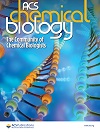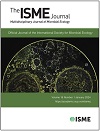Latest Publications
Cutaneous leishmaniasis in British troops following jungle training in Belize: Cumulative incidence and potential risk practices
 Rawlings, Ngwa Niba, Bailey, Mark, Craig, Peter, Courtenay, Orin
Rawlings, Ngwa Niba, Bailey, Mark, Craig, Peter, Courtenay, Orin
British soldiers undergoing jungle training in Belize typically experience a relatively low risk of developing cutaneous leishmaniasis. However, an uncharacteristically large outbreak of cutaneous leishmaniasis occurred in 2022. This study aimed to determine the cumulative incidence of the disease and highlight potential shortcomings in personal protective measures to mitigate exposure to sand fly vector bites. A retrospective analysis was conducted on medical records of cutaneous leishmaniasis cases between 2005 and 2022, as well as on questionnaire responses regarding personal protective measures administered to cutaneous leishmaniasis cases in 2022. The reasons behind the unusually high numbers of cutaneous leishmaniasis cases and cumulative incidence in 2022 remain unclear, emphasising the need to improve personal protective measures provision and implement a comprehensive health education programme for troops undergoing jungle training in Belize.
Early Steps of the Biosynthesis of the Anticancer Antibiotic Pleurotin
 Jack A. Weaver, Duha Alkhder, Panward Prasongpholchai, Michaël D. Tadesse, Emmanuel L. de los Santos, Lijiang Song, Christophe Corre, Fabrizio Alberti
Jack A. Weaver, Duha Alkhder, Panward Prasongpholchai, Michaël D. Tadesse, Emmanuel L. de los Santos, Lijiang Song, Christophe Corre, Fabrizio Alberti
Pleurotin is a meroterpenoid specialized metabolite made by the fungus Hohenbuehelia grisea, and it is a lead anticancer molecule due to its irreversible inhibition of the thioredoxin-thioredoxin reductase system. Total synthesis of pleurotin has been achieved, including through a stereoselective route; however, its biosynthesis has not been characterized. In this study, we used isotope-labeled precursor feeding to show that the nonterpenoid quinone ring of pleurotin and its congeners is derived from phenylalanine. This work sets the foundation to fully elucidate the biosynthesis of pleurotin and its congeners, with long-term potential to optimize their production for therapeutic use and engineer the pathway toward the biosynthesis of valuable analogues.
Ammonia leakage can underpin nitrogen-sharing among soil microorganisms.
 Luke Richards, Kelsey Cremin, Mary Coates, Finley Vigor, Patrick Schäfer, and Orkun S Soyer
Luke Richards, Kelsey Cremin, Mary Coates, Finley Vigor, Patrick Schäfer, and Orkun S Soyer
Soil microbial communities host a large number of microbial species that support important ecological functions such as biogeochemical cycling and plant nutrition. The extent and stability of these functions are affected by inter-species interactions among soil microorganisms, yet the different mechanisms underpinning microbial interactions in the soil are not fully understood. Here, we study the extent of nutrient-based interactions among two model, plant-supporting soil microorganisms, the fungi Serendipita indica, and the bacteria Bacillus subtilis. Our findings highlight that ammonia based N-sharing can be a previously under-appreciated mechanism underpinning interaction among soil microorganisms and could be influenced by microbial or abiotic alteration of pH in microenvironments.
New fungal primers reveal the diversity of Mucoromycotinian arbuscular mycorrhizal fungi and their response to nitrogen application
 Mirjam Seeliger, Sally Hilton, George Muscatt, Christopher Walker, David Bass, Felipe Albornoz, Rachel J Standish, Neil D Gray, Louis Mercy, Leonidas Rempelos, Carolin Schneider, Megan H Ryan, Paul E Bilsborrow, Gary D Bending
Mirjam Seeliger, Sally Hilton, George Muscatt, Christopher Walker, David Bass, Felipe Albornoz, Rachel J Standish, Neil D Gray, Louis Mercy, Leonidas Rempelos, Carolin Schneider, Megan H Ryan, Paul E Bilsborrow, Gary D Bending
Arbuscular mycorrhizas (AM) are the most widespread terrestrial symbiosis and are both a key determinant of plant health and a major contributor to ecosystem processes through their role in biogeochemical cycling. Until recently, it was assumed that the fungi which form AM comprise the subphylum Glomeromycotina (G-AMF), and our understanding of the diversity and ecosystem roles of AM is based almost exclusively on this group. However recent evidence shows that fungi which form the distinctive 'fine root endophyte’ (FRE) AM morphotype are members of the subphylum Mucoromycotina (M-AMF), so that AM symbioses are actually formed by two distinct groups of fungi. We investigated the influence of nitrogen (N) addition and wheat variety on the assembly of AM communities under field conditions. The results demonstrate the need to consider both G-AMF and M-AMF when investigating AM communities, and highlight the importance of primer choice when investigating AMF community dynamics.
Hendrik Schafer publications-
 Overview of the MOSAiC expedition: Ecosystem
Overview of the MOSAiC expedition: Ecosystem
The international and interdisciplinary sea-ice drift expedition “The Multidisciplinary drifting Observatory for the Study of Arctic Climate” (MOSAiC) was conducted from October 2019 to September 2020. The aim of MOSAiC was to study the interconnected physical, chemical, and biological characteristics and processes from the atmosphere to the deep sea of the central Arctic system. The ecosystem team addressed current knowledge gaps and explored unknown biological properties over a complete seasonal cycle focusing on three major research areas: biodiversity, biogeochemical cycles, and linkages to the environment. This article provides a detailed overview of the sampling approaches used to address the three main science objectives. It highlights the core sampling program and provides examples of habitat- or process-specific sampling. The initial results presented include high biological activities in wintertime and the discovery of biological hotspots in underexplored habitats. The unique interconnectivity of the coordinated sampling efforts also revealed insights into cross-disciplinary interactions like the impact of biota on Arctic cloud formation. This overview further presents both lessons learned from conducting such a demanding field campaign and an outlook on spin-off projects to be conducted over the next years.
Elementa: Science of the Anthropocene. August 2024
 Microbial assimilatory sulfate reduction-mediated H2S: an overlooked role in Crohn's disease development
Microbial assimilatory sulfate reduction-mediated H2S: an overlooked role in Crohn's disease development
H2S imbalances in the intestinal tract trigger Crohn's disease (CD), a chronic inflammatory gastrointestinal disorder characterized by microbiota dysbiosis and barrier dysfunction. However, a comprehensive understanding of H2S generation in the gut, and the contributions of both microbiota and host to systemic H2S levels in CD, remain to be elucidated. This investigation aimed to enhance comprehension regarding the sulfidogenic potential of both the human host and the gut microbiota. The study significantly advances understanding of microbial sulfur metabolism in the human gut, elucidating the complex interplay between diet, gut microbiota, and host sulfur metabolism. We highlight the microbial ASR pathway as an overlooked endogenous H2S producer and a potential therapeutic target for managing CD. Microbiome. August 2024
Matt Keeling publications
 Prioritising older individuals for COVID-19 booster vaccination leads to optimal public health outcomes in a range of socio-economic settings
Prioritising older individuals for COVID-19 booster vaccination leads to optimal public health outcomes in a range of socio-economic settings
The rapid development of vaccines against SARS-CoV-2 altered the course of the COVID-19 pandemic. In most countries, vaccinations were initially targeted at high-risk populations, including older individuals and healthcare workers. Policy makers must now determine how to deploy booster vaccinations, particularly when constraints in vaccine supply, delivery and cost mean that booster vaccines cannot be administered to everyone. A key question is whether older individuals should again be prioritised for vaccination, or whether alternative strategies (e.g. offering booster vaccines to the individuals who have most contacts with others and therefore drive infection) can instead offer indirect protection to older individuals. Here, we use mathematical modelling to address this question, considering SARS-CoV-2 transmission in a range of countries with different socio-economic backgrounds. We show that the population structures of different countries can have a pronounced effect on the impact of booster vaccination, even when identical booster vaccination targeting strategies are adopted. However, under the assumed transmission model, prioritising older individuals for booster vaccination consistently leads to the most favourable public health outcomes in every setting considered. PLoS Computational Biology. August 2024
 Modelling timelines to elimination of sleeping sickness in the Democratic Republic of Congo, accounting for possible cryptic human and animal transmission
Modelling timelines to elimination of sleeping sickness in the Democratic Republic of Congo, accounting for possible cryptic human and animal transmission
Sleeping sickness (gambiense human African trypanosomiasis, gHAT) is a vector-borne disease targeted for global elimination of transmission (EoT) by 2030. There are, however, unknowns that have the potential to hinder the achievement and measurement of this goal. These include asymptomatic gHAT infections (inclusive of the potential to self-cure or harbour skin-only infections) and whether gHAT infection in animals can contribute to the transmission cycle in humans. Using modelling, we explore how cryptic (undetected) transmission impacts the monitoring of progress towards and the achievement of the EoT goal. This study is the first to simulate an (as-yet-to-be available) screen-and-treat strategy and found that removing a parasitological confirmation step was predicted to have a more noticeable benefit to transmission reduction under the asymptomatic model compared with the others. Our simulations suggest vector control could greatly impact all transmission routes in all models, although this resource-intensive intervention should be carefully prioritised. Parasites & Vectors. August 2024
